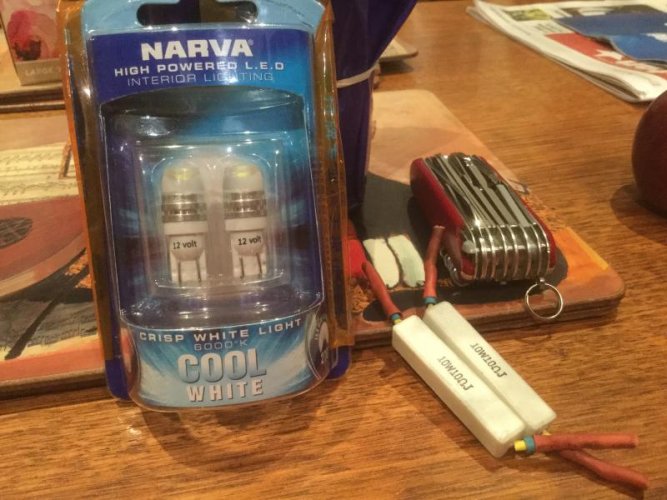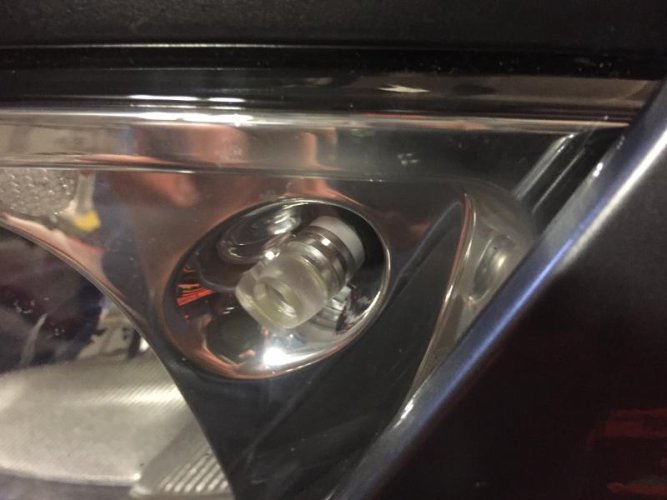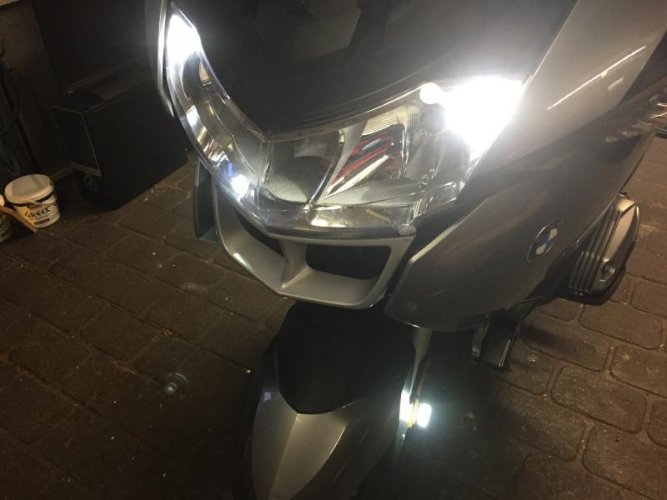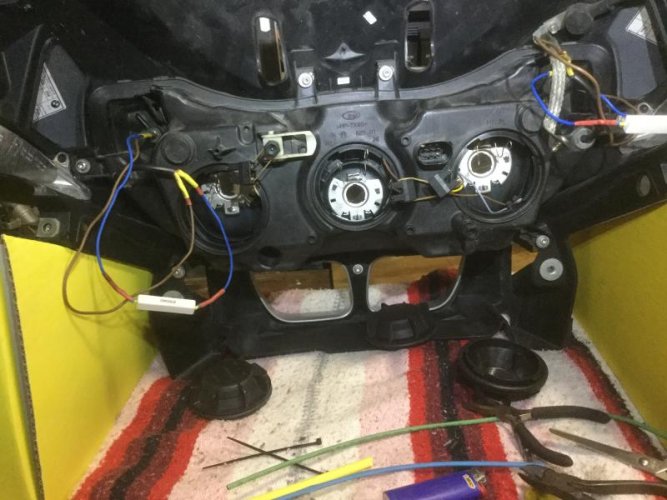Further to my last post I tried fitting the LED side lights with a ceramic resistor on the positive side of the bulb! I gave it another go as the guy at the electronics store knew exactly what I was talking about and supplied me the 10W10 OHM ceramic resistors. I did a great job of fitting them however they did not work once the bike started and I still have the Front Light Malfunction showing on the dash. The guy at the store said that if the 10W10 OHMs did not trick the computer by the extra current draw then come back and get a larger value resistors. Anybody know what will make these work or am I being foolish for persevering?
Can anyone tell me the size that works?
Give any tips and pointers ?
And give an opinion whether 6000K Cool white Bulbs will be too bright on the road??
Note!! we are only talking the front side /park lamps (Shown working when bike not running)
Aussie Bob AKA Leon
Can anyone tell me the size that works?
Give any tips and pointers ?
And give an opinion whether 6000K Cool white Bulbs will be too bright on the road??
Note!! we are only talking the front side /park lamps (Shown working when bike not running)
Aussie Bob AKA Leon






